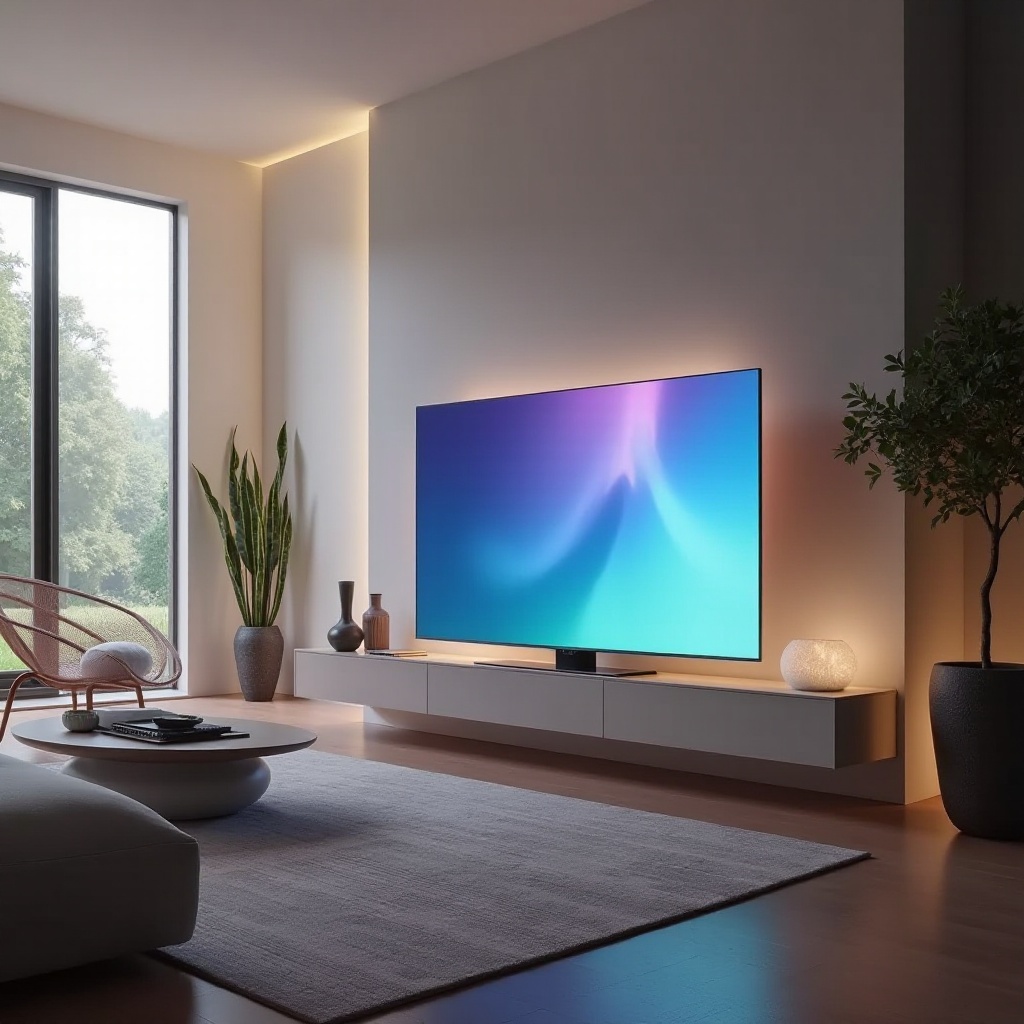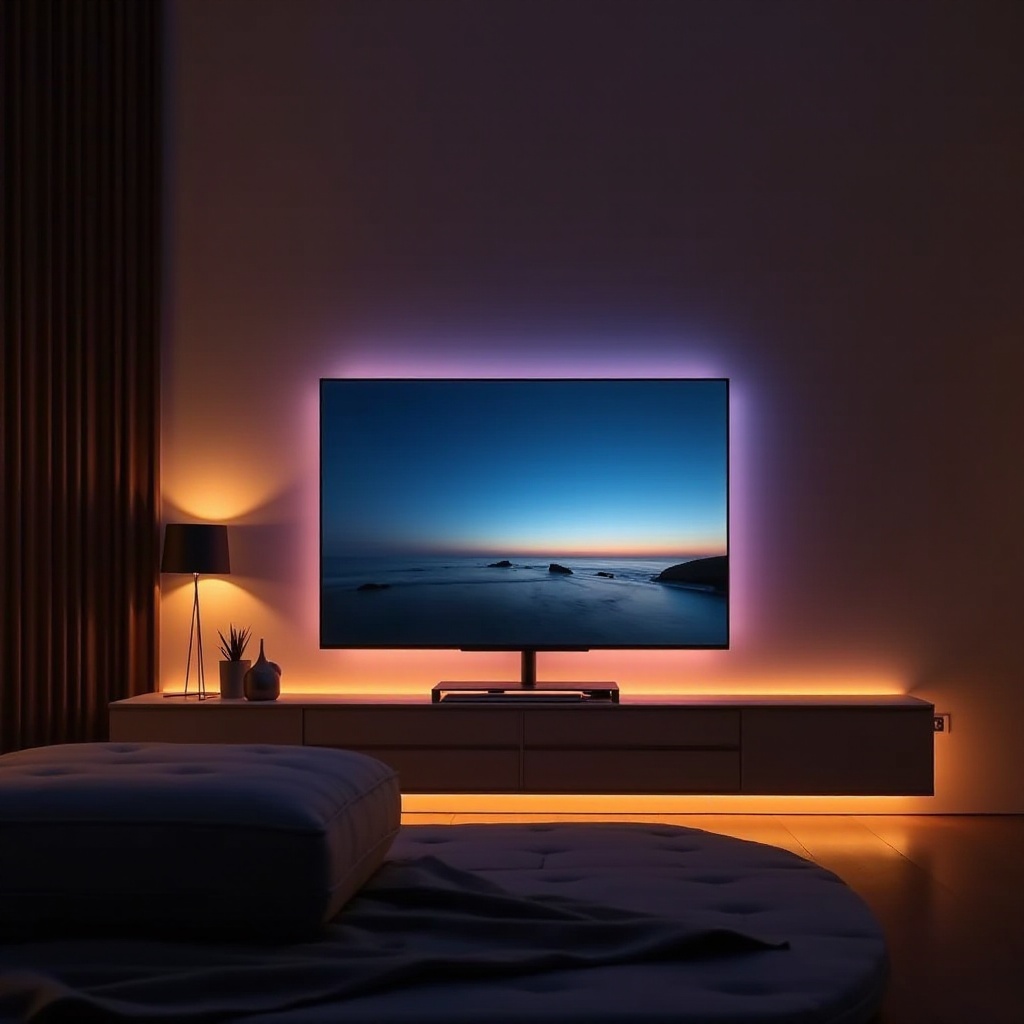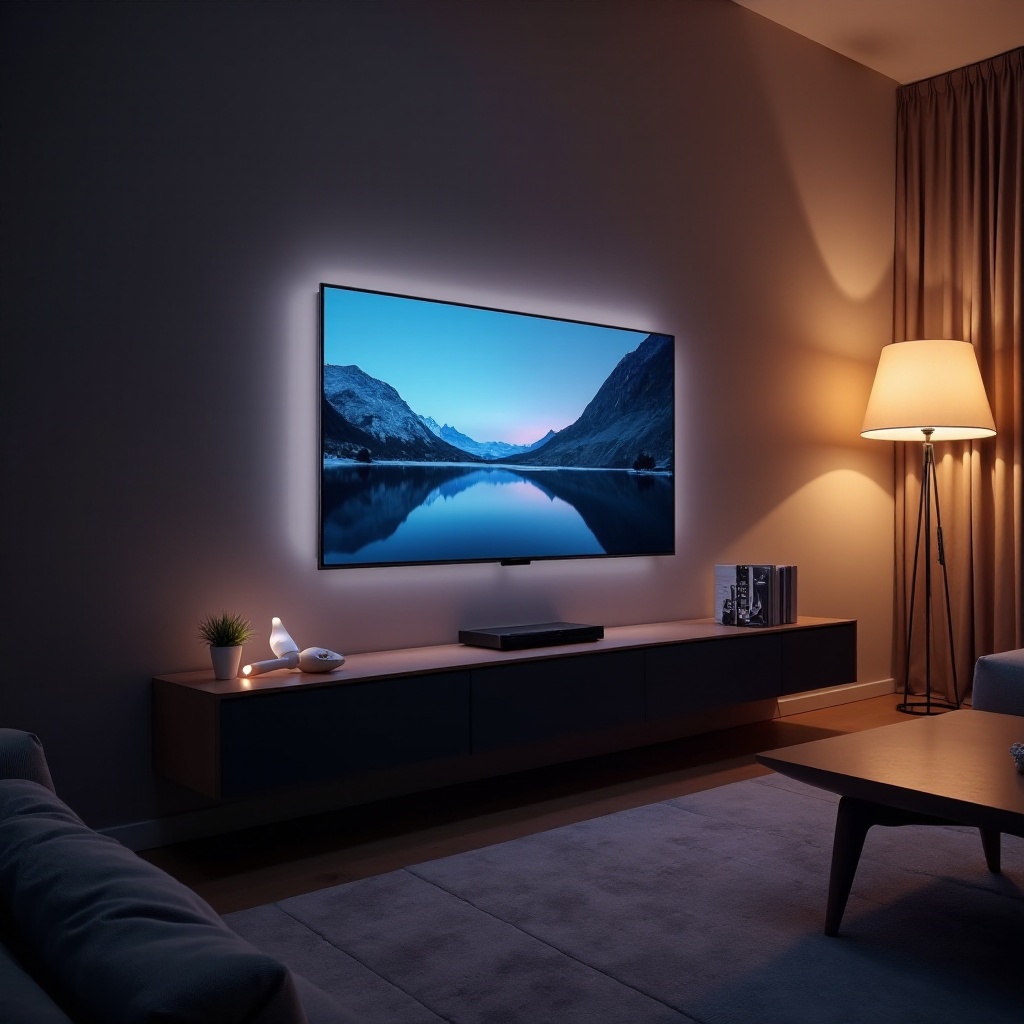Introduction
Edge lit TVs continue to gain popularity due to their sleek aesthetics and budget-friendly design. But what actually is an edge lit TV, and how does it stand apart from other LED types? We’ll delve deeply into this technology, explore its advantages and drawbacks, and compare it with other TV technologies. By the end of this piece, you’ll be well-prepared to decide if an edge lit TV suits your home entertainment needs or if another option might be better.

Understanding Edge Lit TV Technology
Edge lit technology is a specific type of LED backlighting, where LEDs are strategically placed along the edges of the screen. This configuration allows the light to spread across the display from the sides, creating the image we see on the screen.
Basics of Edge Lighting
In edge lighting, the LEDs are not directly behind the display as in some other technologies. Instead, they’re located around the perimeter of the TV screen, using a system of diffusers to distribute the light evenly across the screen.
How Edge Lit TVs are Designed
This lighting setup enables a thinner, lightweight design, appealing to those who value aesthetic design in home electronics. The edge-lit design often translates into TVs that are easier to mount and fit into modern living spaces.

How Edge Lit TVs Work
To better appreciate edge lit technology, it’s crucial to grasp how LED placement impacts display performance. The configuration is key to the ultra-thin profile of these TVs.
LED Placement and Functionality
In edge lit TVs, LEDs are positioned at the screen’s edges. They utilize a diffuser to spread light across the entire display, helping maintain a slim and lightweight profile, which consumers find attractive.
Light Distribution Process
This distribution process is fundamental, with light spreading from the edges to fill the screen. This setup leads to the sleek design, although it may sometimes result in less uniform lighting compared to other configurations.
Advantages of Edge Lit TVs
Edge lit TVs come with several benefits that can enhance the viewing experience, making them a popular choice for many users.
Sleek Design and Aesthetics
The design is notably slim and elegant, making it ideal for mounting on walls and even enhancing the decor of modern home interiors.
Cost-Effectiveness
These TVs generally have a lower price than their counterparts, providing an affordable option for consumers who want a blend of design and basic functionality without stretching their budget.
This affordability and visual appeal make edge lit TVs attractive, yet understanding their constraints is crucial. Let’s explore some of these challenges next.

Disadvantages of Edge Lit TVs
Despite their stylish design and cost benefits, edge lit TVs have certain limitations users should know before purchasing.
Potential for Uneven Lighting
Due to the edge-based lighting, uneven lighting can occur, especially in darker scenes, creating a less uniform display which some users might find distracting.
Limitations in Contrast Ratio
Edge lit TVs may struggle with achieving deep blacks and high contrast levels, particularly when arranged against technologies such as OLED, which are known for superior contrast and color accuracy.
Understanding these limitations is essential in evaluating if an edge lit TV matches your viewing requirements and preferences.
Edge Lit TVs vs. Other Technologies
When selecting a TV, comparing edge lit with other technologies helps make an informed choice that aligns with your preferences and lifestyle.
Comparison with Direct-Lit LED TVs
Direct-lit TVs have LEDs positioned directly behind the screen. This may offer better uniformity in lighting than edge lit TVs, though at the sacrifice of a more considerable, less sleek design.
Edge Lit vs. Full-Array Local Dimming
Full-array TVs contain LEDs spread behind the display with zone-based dimming capabilities, providing superior contrast and picture quality. However, these are typically pricier and bulkier, which does not fit everyone’s budget or space needs.
Through these comparisons, edge lit TVs emerge as a sound option balancing style with affordable performance, although they may not satisfy everyone, like cinephiles or hardcore gamers seeking the utmost in display quality.
Who Should Consider an Edge Lit TV?
An edge lit TV can be the right choice for you based on your specific viewing needs and environmental considerations.
Ideal User Profiles
These TVs are ideal for people valuing a sleek, visually appealing design and those working within a budget. They are also preferred by users seeking a lightweight TV for easy mounting.
Considerations Before Buying
Before purchasing, assess your viewing habits, living room lighting, and screen size preferences to ensure the TV meets your expectations seamlessly.
Balancing these factors against the TV’s features and limitations gives you a clearer picture of whether to invest in an edge lit TV or consider alternatives.
Conclusion
Edge lit TVs offer a unique blend of stylish design and cost-effectiveness, winning the favor of many consumers. By examining their strengths and potential drawbacks and comparing them against other technologies, buyers can make educated decisions tailored to their specific entertainment requirements.
Frequently Asked Questions
Are edge lit TVs good for gaming?
Edge lit TVs are suitable for casual gaming, offering a balance of design and cost. However, enthusiasts might prefer options with better contrast and response times.
Do edge lit TVs consume more energy than other types?
Edge lit TVs are generally energy-efficient compared with traditional TVs, though energy use depends more on brand and model than lighting type alone.
How do I maintain an edge lit TV for optimal performance?
Maintain your TV by regularly cleaning the screen, ensuring ventilation paths are clear of dust, and adjusting picture settings based on room lighting conditions.
